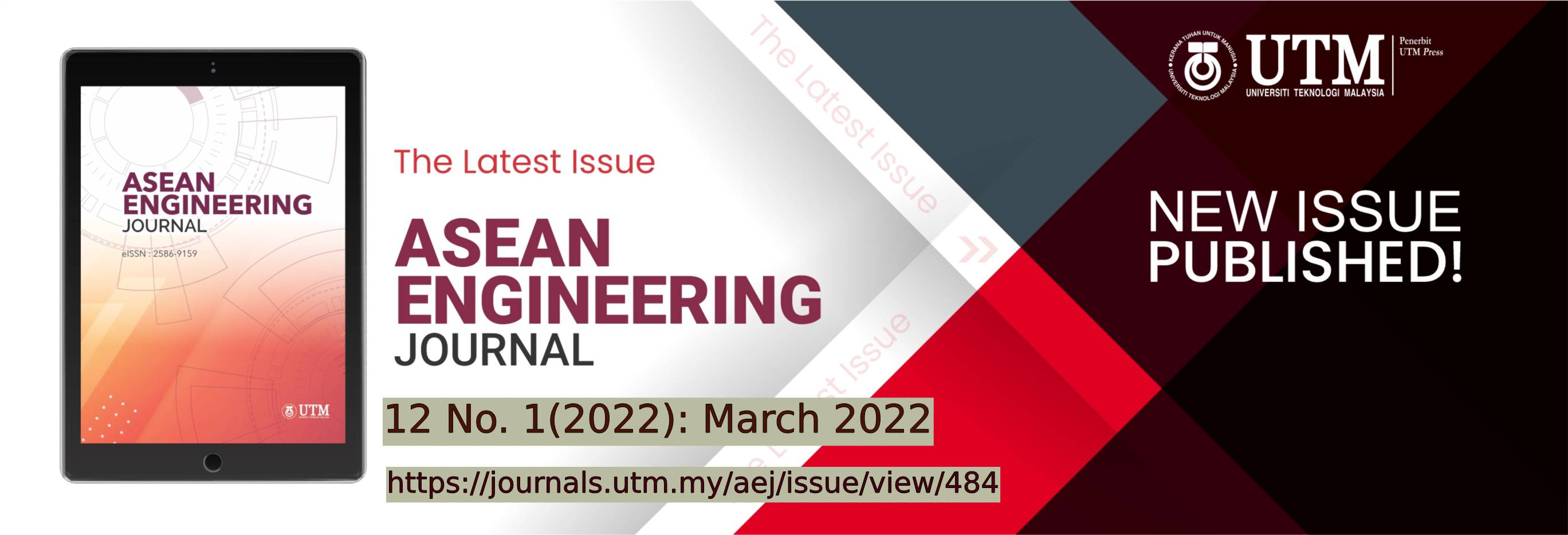WIND CHARACTERISTICS ANALYSIS IN FOUR POTENTIAL TOWNSHIPS IN MYANMAR
DOI:
https://doi.org/10.11113/aej.v12.17225Keywords:
Auto-correlation, Power intensity, Seasonal wind variation, Wind characteristics, Wind persistence, Wind resource assessmentAbstract
Myanmar has set renewable energy aspirations in the energy mix of the country to meet growing energy demand and to increase clean access to electricity as indicated in Myanmar’s Intended Nationally Determined Contribution. Among renewable energy resources, solar and wind energy are expected to contribute to 9% of total energy mix. Although there have been initiatives on the implementation of solar photovoltaic in Myanmar, implementation of wind energy has not been reported. Few studies on wind energy in Myanmar focused on resource assessment investigating the spatial variation of wind speed and power density. Little has been studied on the seasonal nature and persistence of wind in Myanmar from the perspective of energy generation. This study aims at generating wind speed and power density maps of Myanmar using most recent wind data from 2010 to 2017 to identify potential townships with favourable wind conditions. Prominent wind direction, seasonal variations and wind speed persistence were analyzed for four townships with favourable wind conditions. Weibull parameters suggest that frequency of wind is also favourable for wind energy generation. Hence, this study has identified Chauk, Kyaukpadaung, Meiktila and Natogyi townships as potential regions for wind energy development with estimated power producing time of 53.17% and 65.91% of a year at average wind speed of 4 m/s above. This study serves as a basis for further resource assessment for micrositing of wind turbines to identify feasible sites for wind energy generation in Myanmar.
References
Asian Development Bank. 2014. Renewable Energy Policy Myanmar (Second Draft). https://policy.asiapacificenergy.org/node/3439
Infraco Asia. 2015. Magway Wind Power: Demonstrating the Viability of Renewable Energy (Wind Power) Infrastructure Investments in Myanmar. https://infracoasia.com/our-portfolio/magway-wind power/
Myanmar Times. 2018. Magway Inks Deal for Wind Power Feasibility Study. https://www.mmtimes.com/news/magwe-inks-deal-wind-power-feasibility-study.html?fbclid=IwAR0JrSUeZMzvWFCUhNna8nh N0zmwdeSNhm6QW55-ozkHSg3GN-nzw8Li6tE/
Janjai, S., Masiri, I., Promsen, W., Pattarapanitchai, S., and Pankaew, P. 2014. Evaluation of Wind Energy Potential over Thailand by Using an Atmospheric Mesoscale Model and a GIS Approach. Journal of Wind Engineering and Industrial Aerodynamics. 129: 1–10. DOI: https://doi.org/10.1016/j.jweia.2014.03.010
Shu, Z. R., Li, Q. S., and Chan, P. W. 2015. Statistical Analysis of Wind Characteristics and Wind energy Potential in Hong Kong. Energy Conversion and Management. 101: 644–657. DOI: https://doi.org/10.1016/j.enconman.2015.05.070
Cancino-Solórzano, Y., Gutiérrez-Trashorras, A. J., and Xiberta-Bernat, J. 2010, Dec. Analytical Methods for Wind persistence: Their Application in Assessing the Best Site for a Wind Farm in the State of Veracruz, Mexico. Renewable Energy. 35(12): 2844–2852. DOI: https://doi.org/10.1016/j.renene.2010.05.008
Masseran, N., Razali, A. M., Ibrahim, K., and Wan Zin, W. Z. 2012, Jan. Evaluating the Wind Speed Persistence for Several Wind Stations in Peninsular Malaysia. Energy. 37(1): 649–656. DOI: https://doi.org/10.1016/j.energy.2011.10.035
Soe, T., Zheng, M. and Sreevalsan, E. 2016. Pre-Feasibility Study of Wind Energy Resources in Myanmar. ASEAN Engineering Journal Part A. 6: 27-36
Koçak, K. 2008, Jan. Practical Ways of Evaluating Wind Speed Persistence. Energy. 33(1): 65–70. DOI: https://doi.org/10.1016/j.energy.2007.07.010
Arslan, T., Bulut, Y. M., and Altin Yavuz, A. 2014. Comparative Study of Numerical Methods for Determining Weibull Parameters for Wind Energy Potential. Renewable & Sustainable Energy Reviews. 40: 820–825. DOI: https://doi.org/10.1016/j.rser.2014.08.009
George, F. 2014. A Comparison of Shape and Scale Estimators of the Two-parameter Weibull Distribution. Journal of Modern Applied Statistical Methods. 13(1): 23–35. DOI: https://doi.org/10.22237/jmasm/1398916920
Costa Rocha, P. A., de Sousa, R. C., de Andrade, C. F., and da Silva, M. E. V. 2012. Comparison of Seven Numerical Methods for Determining Weibull Parameters for Wind Energy Generation in the Northeast Region of Brazil. Applied Energy. 89(1): 395–400. DOI: https://doi.org/10.1016/j.apenergy.2011.08.003
Saleh, H., Abou El-Azm Aly, A., and Abdel-Hady, S. 2012. Assessment of Different Methods Used to Estimate Weibull Distribution Parameters for Wind Speed in Zafarana Wind Farm, Suez Gulf, Egypt. Energy. 44(1): 710–719. DOI: https://doi.org/10.1016/j.energy.2012.05.021
Chang, T. P. 2011. Performance Comparison of Six Numerical Methods in Estimating Weibull Parameters for Wind Energy Application. Applied Energy. 88(1): 272–282. DOI: https://doi.org/10.1016/j.apenergy.2010.06.018
Justus, C. G., Hargraves, W. R., Mikhail, A., and Graber, D. 1978, Mar. Methods for Estimating Wind Speed Frequency Distributions. Journal of Applied Meteorology. 17(3): 350–353.DOI: https://doi.org/10.1175/1520 0450(1978)017<0350:MFEWSF> 2.0.CO;2
















